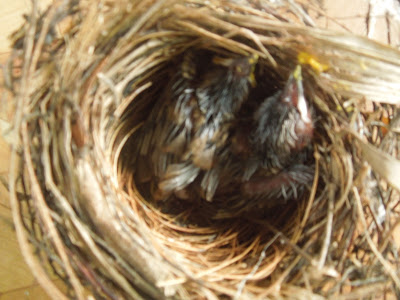The Yellow-vented Bulbul chicks in their cage
One of the Yellow-vented Bulbul chick perch on hand - despite the bird already able to fly in a short distance, the birds will stay calmly when perched on the hand.
Feeding the chick by using stick - the chick cannot feed the food by itself yet.
The food we use to feed the Bulbul chicks - Bird's ration liquefied in a ripe cherry juice, training the bird to enjoy the sweetness of fruit. Beside cherry, we also feed it with fruit such as apple and banana. In order to help the development of the chicks, we also add protein such as ant, termites, cricket and bug gut juice to the ration.
Both chicks have different level of development - Chick perch in the cage has a rapid development compare to the sitting chick. The perching chick also has a louder voice, more agile movement and eat more frequent than the sitting bird.
I'll post the next development of this Bulbul chicks on the next week post






























